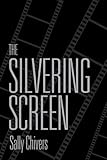The Silvering Screen : Old Age and Disability in Cinema / Sally Chivers.
Material type: TextPublisher: Toronto : University of Toronto Press, [2011]Copyright date: ©2010Description: 1 online resource (240 p.) : 17 halftonesContent type:
TextPublisher: Toronto : University of Toronto Press, [2011]Copyright date: ©2010Description: 1 online resource (240 p.) : 17 halftonesContent type: - 9781442611047
- 9781442686045
- 791.43/654 22
- online - DeGruyter
| Item type | Current library | Call number | URL | Status | Notes | Barcode | |
|---|---|---|---|---|---|---|---|
 eBook
eBook
|
Biblioteca "Angelicum" Pont. Univ. S.Tommaso d'Aquino Nuvola online | online - DeGruyter (Browse shelf(Opens below)) | Online access | Not for loan (Accesso limitato) | Accesso per gli utenti autorizzati / Access for authorized users | (dgr)9781442686045 |
Frontmatter -- Contents -- Acknowledgments -- Introduction: The Silvering Screen -- 1. Same Difference? Gerontology and Disability Studies Join Hands -- 2. Baby Jane Grew Up: The Horror of Aging in Mid-Twentieth-Century Hollywood -- 3. Grey Matters: Dementia, Cognitive Difference, and the ‘Guilty Demographic’ on Screen -- 4. ‘Sounds Like a Regular Marriage’: Monogamy and the Fidelity of Care -- 5. Yes, We Still Can: Paul Newman, Clint Eastwood, Aging Masculinity, and the American Dream -- 6. As Old as Jack Gets: Nicholson, Masculinity, and the Hollywood System -- Conclusion: Final Films, The Silvering Screen Comes of Age -- Filmography -- Notes -- Works Cited -- Index
restricted access online access with authorization star
http://purl.org/coar/access_right/c_16ec
Popular films have always included elderly characters, but until recently, old age only played a supporting role onscreen. Now, as the Baby Boomer population hits retirement, there has been an explosion of films, including Away From Her, The Straight Story, The Barbarian Invasions, and About Schmidt, where aging is a central theme.The first-ever sustained discussion of old age in cinema, The Silvering Screen brings together theories from disability studies, critical gerontology, and cultural studies, to examine how the film industry has linked old age with physical and mental disability. Sally Chivers further examines Hollywood's mixed messages - the applauding of actors who portray the debilitating side of aging, while promoting a culture of youth - as well as the gendering of old age on film. The Silvering Screen makes a timely attempt to counter the fear of aging implicit in these readings by proposing alternate ways to value getting older.
Mode of access: Internet via World Wide Web.
In English.
Description based on online resource; title from PDF title page (publisher's Web site, viewed 01. Dez 2023)


